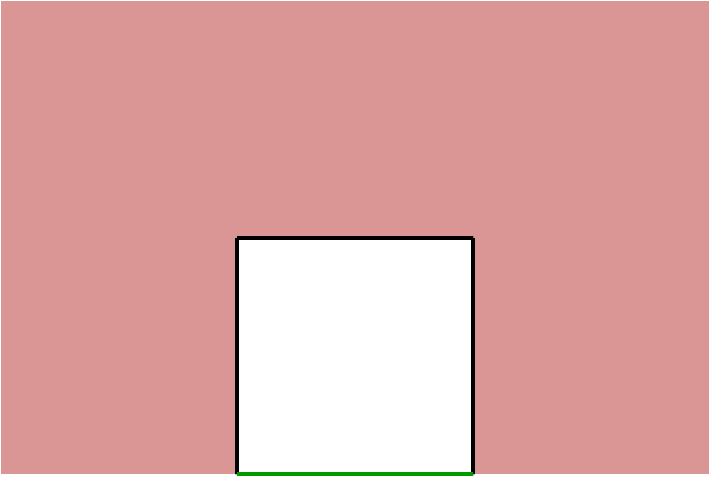Skip over navigation
The original rectangle had a perimeter of $2 \times 30\text{cm} + 2\times 40\text{cm} = 140\text{cm}$.
 Each of the new squares that is cut out adds three sides of $5\text{cm}$ each (shown in black on the diagram), and removes one portion of length $5\text{cm}$ (shown in green).
Each of the new squares that is cut out adds three sides of $5\text{cm}$ each (shown in black on the diagram), and removes one portion of length $5\text{cm}$ (shown in green).
This means the overall effect of cutting out each square is to increase the perimeter by $10\text{cm}$. Since are ten squares, the overall increase is $10 \times 10 \text{cm} = 100\text{cm}$.
Therefore the final perimeter is $140\text{cm} + 100\text{cm} = 240\text{cm}$.


Or search by topic
Number and algebra
Geometry and measure
Probability and statistics
Working mathematically
Advanced mathematics
For younger learners
Christmas Cut-out
Age 11 to 14
ShortChallenge Level 





- Problem
- Solutions
The original rectangle had a perimeter of $2 \times 30\text{cm} + 2\times 40\text{cm} = 140\text{cm}$.
 Each of the new squares that is cut out adds three sides of $5\text{cm}$ each (shown in black on the diagram), and removes one portion of length $5\text{cm}$ (shown in green).
Each of the new squares that is cut out adds three sides of $5\text{cm}$ each (shown in black on the diagram), and removes one portion of length $5\text{cm}$ (shown in green).This means the overall effect of cutting out each square is to increase the perimeter by $10\text{cm}$. Since are ten squares, the overall increase is $10 \times 10 \text{cm} = 100\text{cm}$.
Therefore the final perimeter is $140\text{cm} + 100\text{cm} = 240\text{cm}$.
This problem is taken from the UKMT Mathematical Challenges.
You can find more short problems, arranged by curriculum topic, in our short problems collection.
You may also like
Consecutive Numbers
An investigation involving adding and subtracting sets of consecutive numbers. Lots to find out, lots to explore.
Days and Dates
Investigate how you can work out what day of the week your birthday will be on next year, and the year after...

